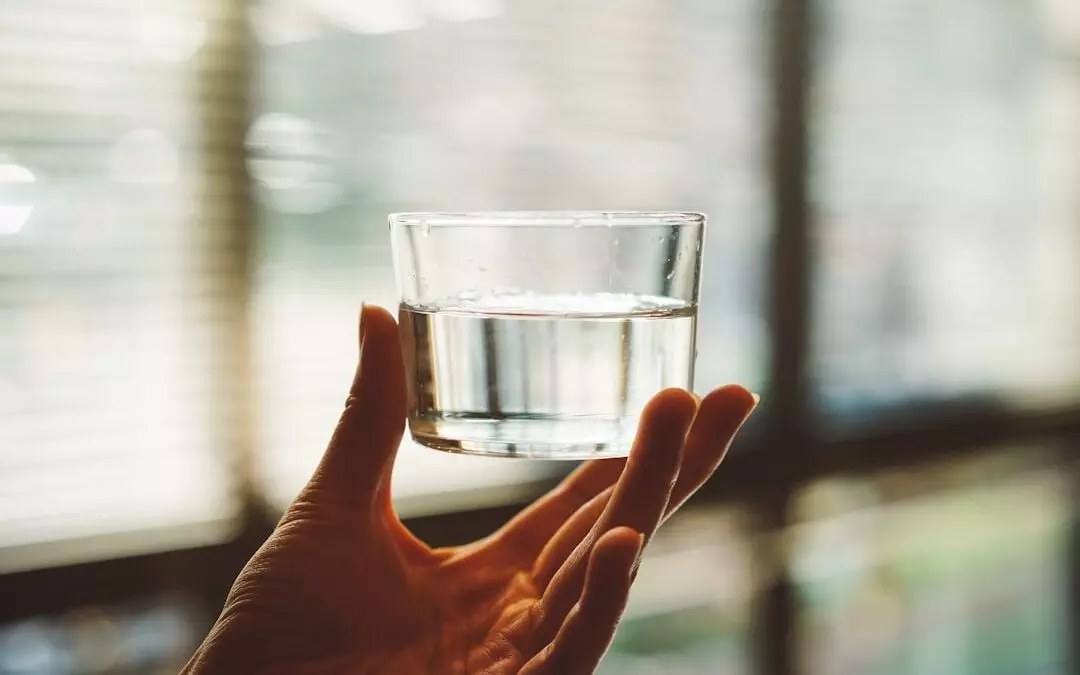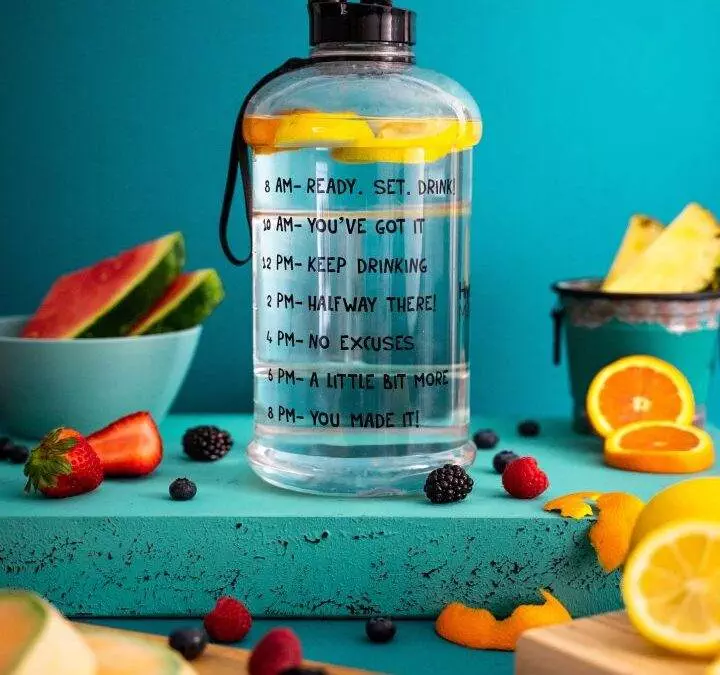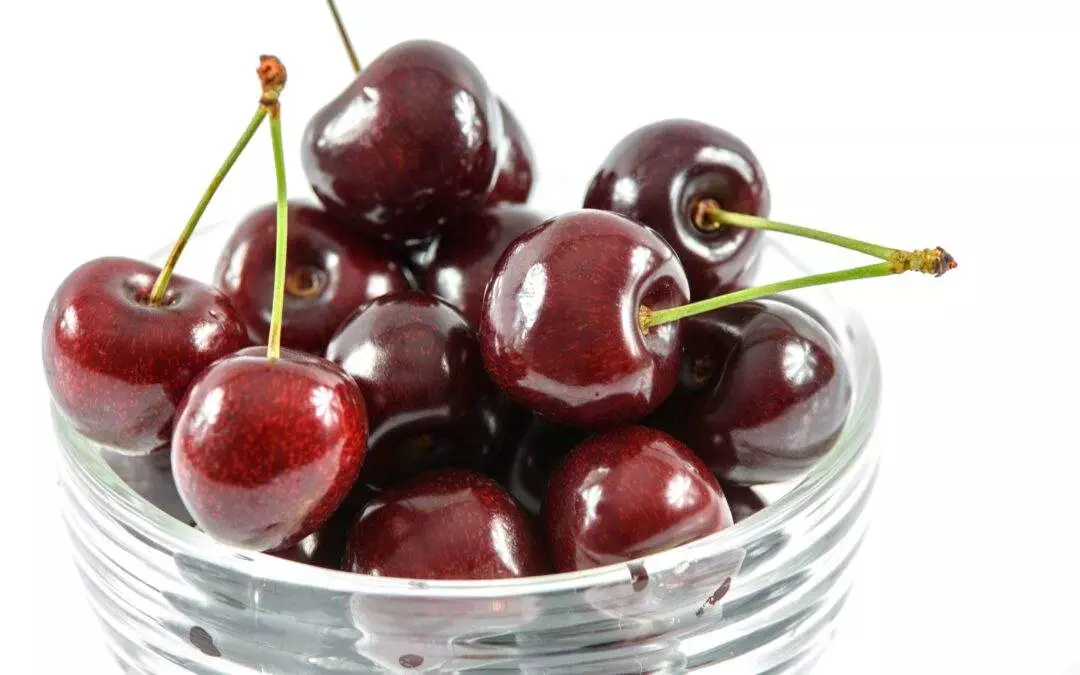
The Link Between Coffee, Caffeine, and Gout Flare-Ups
Introduction
Gout is a type of inflammatory arthritis caused by the buildup of uric acid crystals in the joints. It can lead to painful flare-ups, swelling, and stiffness. Many gout patients wonder how their caffeine intake, particularly from coffee, might impact their condition.
The research on the relationship between caffeine, coffee, and gout is mixed, with some studies suggesting caffeine may help, while others indicate it could potentially worsen symptoms. Let’s take a closer look at the evidence.
The Potential Benefits of Caffeine for Gout
Several studies have found that increased coffee consumption is associated with lower uric acid levels and a reduced risk of developing gout (Choi & Curhan, 2007, pp. 816–821), (Kiyohara et al., 1999, pp. 125–130). The proposed mechanisms include:
- Diuretic Effect: Caffeine has a mild diuretic effect, which can increase uric acid excretion through the kidneys (Bhaktha et al., 2016, pp. 393–395), (Choi & Curhan, 2007, pp. 816–821).
- Antioxidant Properties: Coffee contains antioxidants that may help reduce inflammation associated with gout flare-ups (Cutler et al., 2015, pp. 2233–2238).
- Metabolic Changes: Caffeine may influence purine metabolism and lower uric acid production in the body (Wen et al., 2024), (Matsumura et al., 2019).
A 2007 study followed over 45,000 men for 12 years and found that increasing coffee intake was associated with a decreased risk of developing gout. Men who drank 6 or more cups of coffee per day had a 59% lower risk of gout compared to non-coffee drinkers (Choi & Curhan, 2007, pp. 816–821).
The Potential Drawbacks of Caffeine for Gout
However, not all research supports the idea that caffeine is beneficial for gout. Some studies have found that high doses of caffeine may actually increase uric acid levels and the risk of gout flare-ups (Liu et al., 2022, pp. 391–399), (Kamely et al., 2016, pp. 2673–2678). The proposed mechanisms include:
- Dehydration: Caffeine can have a diuretic effect, leading to dehydration, which may increase uric acid concentrations in the body (Zavvos et al., 2020, pp. 288–293).
- Metabolic Changes: In some individuals, caffeine may alter purine metabolism in a way that increases uric acid production (Balasubramanian, 2003, pp. 930–936), (Kamely et al., 2016, pp. 2673–2678).
A 2022 study found an inverted U-shaped relationship between caffeine intake and serum uric acid levels, meaning moderate caffeine intake was associated with lower uric acid, but very high or very low intake was linked to higher uric acid (Liu et al., 2022, pp. 391–399).
Balancing Caffeine Intake for Gout Management
The research suggests that moderate coffee or caffeine consumption (around 1-3 cups per day) may be beneficial for gout, while excessive intake could potentially worsen symptoms. However, individual responses can vary.
It’s important for gout patients to pay attention to how their body reacts to caffeine and adjust their intake accordingly. Staying hydrated, maintaining a healthy diet, and working closely with a healthcare provider are also crucial for managing gout effectively.
Conclusion
The relationship between caffeine, coffee, and gout is complex. While some studies suggest moderate caffeine intake may help lower uric acid and reduce gout risk, others indicate high doses could potentially exacerbate symptoms. Gout patients should experiment with their caffeine intake and monitor how it affects their condition. Maintaining overall healthy lifestyle habits is key for managing gout successfully.
Bibliography:
Abulfadle, K., Bakhaat, G., Rahiman, S., & Tantry, B. (2015). Effect of Excessive Green Tea Versus Fluoride and Caffeine on Body Weight and Serum Thyroid Hormones in Male Mice. Journal of Physiology and Pharmacology Advances, 5, 565–573.
Agrawal, M., Niroula, A., Cunin, P., McConkey, M., Kovalcik, V., Kim, P. G., Wong, W., Weeks, L., Lin, A. E., Miller, P., Gibson, C., Sekar, A., Schaefer, I., Neuberg, D., Stone, R., Bick, A., Uddin, M., Griffin, G., Jaiswal, S., … Ebert, B. (2022). TET2-mutant clonal hematopoiesis and risk of gout. Blood, 140, 1094–1103.
Aydın, Ü. F., Kozanoğlu, E., & Tuli, A. (2024). High Fructose Consumption and Metabolic Syndrome from Gout Perspective. Cerrahpasa Medical Journal.
Bae, J., Park, P., Chun, B., Choi, B., Kim, M. K., Shin, M., Lee, Y.-H., Shin, D., & Kim, S.-K. (2014). The effect of coffee, tea, and caffeine consumption on serum uric acid and the risk of hyperuricemia in Korean Multi-Rural Communities Cohort. Rheumatology International, 35, 327–336.
Balasubramanian, T. (2003). Uric Acid or 1-Methyl Uric Acid in the Urinary Bladder Increases Serum Glucose, Insulin, True Triglyceride, and Total Cholesterol Levels in Wistar Rats. TheScientificWorldJournal, 3, 930–936.
Bhaktha, G., Shantaram, M., & Nayak, S. (2016). BENEFICIAL EFFECTS OF COFFEE AND MAINTENANCE OF URIC ACID LEVELS. International Journal of Pharmacy and Pharmaceutical Sciences, 8, 393–395.
Borghi, C., Agabiti-Rosei, E., Johnson, R. J., Kielstein, J., Lurbe, E., Mancia, G., Redón, J., Stack, A., & Tsioufis, K. (2020). Hyperuricaemia and gout in cardiovascular, metabolic and kidney disease. European Journal of Internal Medicine.
Burhan, A., Usmar, U., Zulham, Z., & Andarwiyati, A. (2018). The effect of kersen’s skin infusion (Muntingia calabura L.) on blood uric acid levels of the rats (Rattus novergicus). Jurnal Kedokteran Dan Kesehatan Indonesia.
Carvalho, A., Marticorena, F., Grecco, B., Barreto, G., & Saunders, B. (2022). Can I Have My Coffee and Drink It? A Systematic Review and Meta-analysis to Determine Whether Habitual Caffeine Consumption Affects the Ergogenic Effect of Caffeine. Sports Medicine, 52, 2209–2220.
Chen, C. K., & Rosli, M. A. M. (2018). Effect of caffeine consumption prior to walking exercise on body composition in overweight individuals. 13.
Chen, P.-E., Liu, C.-Y., Chien, W.-H., Chien, C.-W., & Tung, T. (2019). Effectiveness of Cherries in Reducing Uric Acid and Gout: A Systematic Review. Evidence-Based Complementary and Alternative Medicine, 2019.
Chen-Xu, M., Yokose, C., Rai, S., Pillinger, M., & Choi, H. K. (2019). Contemporary Prevalence of Gout and Hyperuricemia in the United States and Decadal Trends: The National Health and Nutrition Examination Survey, 2007–2016. Arthritis & Rheumatology, 71.
Choi, H. K., & Curhan, G. (2007). Coffee, tea, and caffeine consumption and serum uric acid level: the third national health and nutrition examination survey. Arthritis & Rheumatism, 57 5, 816–821.
Cipolletta, E., Tata, L., Nakafero, G., Avery, A., Mamas, M., & Abhishek, A. (2022). Association Between Gout Flare and Subsequent Cardiovascular Events Among Patients With Gout. Journal of the American Medical Association (JAMA), 328 5, 440–450.
Cutler, R., Camandola, S., Malott, K. F., Edelhauser, M. A., & Mattson, M. (2015). The Role of Uric Acid and Methyl Derivatives in the Prevention of Age-Related Neurodegenerative Disorders. Current Topics in Medicinal Chemistry, 15 21, 2233–2238.
Dehlin, M., Jacobsson, L., & Roddy, E. (2020). Global epidemiology of gout: prevalence, incidence, treatment patterns and risk factors. Nature Reviews Rheumatology, 16, 380–390.
Duncan, M., Dobell, A., Caygill, C. L., Eyre, E. L. J., & Tallis, J. (2018). The effect of acute caffeine ingestion on upper body anaerobic exercise and cognitive performance. European Journal of Sport Science, 19, 103–111.
Duncan, M., Dobell, A., Caygill, C. L., Eyre, E. L. J., & Tallis, J. (2019). The effect of acute caffeine ingestion on repeated upper body anaerobic exercise and cognitive performance.
Duncan, M., Eyre, E., Grgic, J., & Tallis, J. (2019). The effect of acute caffeine ingestion on upper and lower body anaerobic exercise performance. European Journal of Sport Science, 19, 1359–1366.
Elbendary, E. Y., Mahmoud, M., Salem, S. F., & Farah, A. (2023). The Effects of Energy Drink Consumption on Kidney and Liver Function: A Comparative Study. The Journal of Bioscience and Medicine.
Ferragut, C., Gonzalo-Encabo, P., López-Samanés, Á., Valadés, D., & Pérez‐López, A. (2024). Effect of Acute Sodium Bicarbonate and Caffeine Coingestion on Repeated-Sprint Performance in Recreationally Trained Individuals: A Randomized Controlled Trial. International Journal of Sports Physiology and Performance, 1–8.
Filip-Stachnik, A., Krzysztofik, M., Coso, J. D., Pałka, T., & Sadowska-Krępa, E. (2023). The Effect of Acute Caffeine Intake on Resistance Training Volume, Prooxidant-Antioxidant Balance and Muscle Damage Markers Following a Session of Full-Body Resistance Exercise in Resistance-Trained Men Habituated to Caffeine. Journal of Sports Science and Medicine, 22 3, 436–446.
Filip-Stachnik, A., Spieszny, M., Stanisz, L., & Krzysztofik, M. (2022). Does caffeine ingestion affect the lower-body post-activation performance enhancement in female volleyball players? BMC Sports Science, Medicine and Rehabilitation, 14.
Fitzgerald, J., Dalbeth, N., Mikuls, T., Brignardello-Petersen, R., Guyatt, G., Abeles, A., Gelber, A., Harrold, L., Khanna, D., King, C., Levy, Gerald. D., Libbey, C., Mount, D., Pillinger, M., Rosenthal, A., Singh, J., Sims, J. E., Smith, B. J., Wenger, N., … Neogi, T. (2020). 2020 American College of Rheumatology Guideline for the Management of Gout. Arthritis & Rheumatology, 72.
Giráldez-Costas, V., Coso, J. D., Mañas, A., & Salinero, J. (2023). The Long Way to Establish the Ergogenic Effect of Caffeine on Strength Performance: An Overview Review. Nutrients, 15.
Główka, N., Malik, J., Podgórski, T., Stemplewski, R., Maciaszek, J., Ciążyńska, J., Zawieja, E. E., Chmurzyńska, A., Nowaczyk, P., & Durkalec-Michalski, K. (2024). The dose-dependent effect of caffeine supplementation on performance, reaction time and postural stability in CrossFit – a randomized placebo-controlled crossover trial. Journal of the International Society of Sports Nutrition, 21.
Hasibuan, S. B. (2018). CORRELATION BETWEEN THE CONSUMPTION OF TEA DRINK WITH URIC ACID LEVEL OF THE STUDENTS AT SETIA BUDI UNIVERSITY SURAKARTA) Sartika.
He, Q., Mok, T., Sin, T.-H., Yin, J., Li, S., Yin, Y., Ming, W., & Feng, B. (2023). Global, Regional, and National Prevalence of Gout From 1990 to 2019: Age-Period-Cohort Analysis With Future Burden Prediction. JMIR Public Health and Surveillance, 9.
Hursel, R., & Westerterp-Plantenga, M. (2009). Green tea catechin plus caffeine supplementation to a high protein diet has no additional effect on body weight maintenance after weight loss. Appetite, 52.
Jiang, J., Zhang, T., Liu, Y., Chang, Q., Zhao, Y., Guo, C., & Xia, Y. (2023). Prevalence of Diabetes in Patients with Hyperuricemia and Gout: A Systematic Review and Meta-analysis. Current Diabetes Reports, 23, 103–117.
Kamely, M., Torshizi, M. A. K., & Rahimi, S. (2016). Blood biochemistry, thyroid hormones, and performance in broilers with ascites caused by caffeine. Poultry Science, 95 11, 2673–2678.
Kiyohara, C., Kono, S., Honjo, S., Todoroki, I., Sakurai, Y., Nishiwaki, M., Hamada, H., Nishikawa, H., Koga, H., Ogawa, S., & Nakagawa, K. (1999). Inverse association between coffee drinking and serum uric acid concentrations in middle-aged Japanese males. British Journal of Nutrition, 82, 125–130.
Kolber, M., & Ton, J. (2020). Treat‐to‐Target in Gout Management? Comment on the Article by FitzGerald et al. Arthritis & Rheumatology, 73.
Kowalczyk, N. S., Prochaska, M., & Worcester, E. (2023). Metabolomic profiles and pathogenesis of nephrolithiasis. Current Opinion in Nephrology and Hypertension, 32, 490–495.
Kuo, C., Grainge, M., Zhang, W., & Doherty, M. (2015). Global epidemiology of gout: prevalence, incidence and risk factors. Nature Reviews Rheumatology, 11, 649–662.
Larsson, S., Woolf, B., & Gill, D. (2023). Appraisal of the causal effect of plasma caffeine on adiposity, type 2 diabetes, and cardiovascular disease: two sample mendelian randomisation study. BMJ Medicine, 2, 1–8.
Lenasi, H., Rihar, E., Filipič, J., Klemenc, M., & Fister, P. (2023). The Effect of Caffeine on Heart Rate Variability in Newborns: A Pilot Study. Life, 13.
Lima-Silva, A., Cristina-Souza, G., Silva-Cavalcante, M., Bertuzzi, R., & Bishop, D. (2021). Caffeine during High-Intensity Whole-Body Exercise: An Integrative Approach beyond the Central Nervous System. Nutrients, 13.
Limirio, L. S., Santos, H. O., Reis, A. S., & Oliveira, E. P. (2021). Association Between Dietary Intake and Serum Uric Acid Levels in Kidney Transplant Patients. Journal of Renal Nutrition.
Liu, A. G., Arceneaux, K. P., Chu, J., Jacob, G., Schreiber, A. L., Tipton, R., Yu, Y., Johnson, W., Greenway, F., & Primeaux, S. (2015). The effect of caffeine and albuterol on body composition and metabolic rate. Obesity, 23.
Liu, A., Jiang, C., Liu, Q., Yin, H., Zhou, H., Ma, H., & Geng, Q. (2022). The Inverted U-Shaped Association of Caffeine Intake with Serum Uric Acid in U.S. Adults. The Journal of Nutrition, Health & Aging, 26, 391–399.
Marinho, A., Cristina-Souza, G., Santos, P. S., Santos-Mariano, A. C., Rodacki, A., De-Oliveira, F., Bertuzzi, R., & Lima-Silva, A. (2022). Caffeine alters the breathing pattern during high-intensity whole-body exercise in healthy men. European Journal of Applied Physiology, 122, 1497–1507.
Martinon, F., Petrilli, V., Mayor, A., Tardivel, A., & Tschopp, J. (2006). Gout-associated uric acid crystals activate the NALP3 inflammasome. Nature, 440, 237–241.
Matsumura, N., & Aoyama, K. (2023). Glutathione-Mediated Neuroprotective Effect of Purine Derivatives. International Journal of Molecular Sciences, 24.
Matsumura, N., Kinoshita, C., Kikuchi-Utsumi, K., Nakaki, T., & Aoyama, K. (2019). A possible mechanism of caffeine metabolites on cysteine uptake in hippocampal neurons. Proceedings for Annual Meeting of The Japanese Pharmacological Society.
Megawati, M., & Nur, F. (2021). The Effect of Sidaguri Leaf Infusa (Sida rhombifolia L) On Uric acid levels in mice Male (Mus musculus). Jurnal Farmasi Sandi Karsa.
Merino-Fernández, M., Giráldez-Costas, V., González-García, J., Gutiérrez-Hellín, J., González-Millán, C., Matos-Duarte, M., & Ruíz-Moreno, C. (2022). Effects of 3 mg/kg Body Mass of Caffeine on the Performance of Jiu-Jitsu Elite Athletes. Nutrients, 14.
Musdja, M. Y., Azter, A. A., & Musir, A. (2019). The Effect of Ethanol Extract of Elephantopus scaber Linn in Decreasing Blood Uric Acid Levels of Hyperuricemic Male Rats. European Journal of Medicinal Plants.
Neogi, T., Jansen, T., Dalbeth, N., Fransen, J., Schumacher, H., Berendsen, D., Brown, M., Choi, H. K., Edwards, N., Janssens, H., Lioté, F., Naden, R., Nuki, G., Ogdie, A., Pérez-Ruiz, F., Saag, K., Singh, J. A., Sundy, J., Tausche, A., … Taylor, W. (2015). 2015 Gout classification criteria: an American College of Rheumatology/European League Against Rheumatism collaborative initiative. Annals of the Rheumatic Diseases, 74, 1789–1798.
Onder, M. E., & Zengin, O. (2021). YouTube as a source of information on gout: a quality analysis. Rheumatology International, 41, 1321–1328.
Pratama, F. A., Aisyafalah, S., & Kurnijasanti, R. (2024). Effectiveness of Bay Leaf Extract (Syzygium polyanthum) on Uric Acid and Cholesterol Levels in Caffeine-Induced Male Mice (Mus musculus). Journal of Basic Medical Veterinary.
Radenkovic, S., Stojanovic, D., Milojkovic, B., & Radović, J. (2015). 9A.02 SODIUM SENSITIVE HYPERTENSION: CAN IT BE ASSESSED BY MEASURING URIC ACID LEVELS?
Rahimi, M., Semenova, E., John, G., Fallah, F., Larin, A., Generozov, E., & Ahmetov, I. (2024). Effect of ADORA2A Gene Polymorphism and Acute Caffeine Supplementation on Hormonal Response to Resistance Exercise: A Double-Blind, Crossover, Placebo-Controlled Study. Nutrients, 16.
Reddy, R. (2021). Monoarticular Crystal Arthropathy of the Knee: Tophaceous Gout. Dubai Medical Journal, 5, 41–45.
Richette, P., Doherty, M., Pascual, E., Barskova, V., Becce, F., Castaneda, J. F., Coyfish, M., Guillo, S., Jansen, T., Janssens, H., Lioté, F., Mallen, C., Nuki, G., Pérez-Ruiz, F., Pimentão, J., Punzi, L., Pywell, A., So, A., Tausche, A., … Bardin, T. (2019). 2018 updated European League Against Rheumatism evidence-based recommendations for the diagnosis of gout. Annals of the Rheumatic Diseases, 79, 31–38.
Robles-González, L., Maldonado, M. R., Alcalá-Escamilla, J. C., Jurado-Fasoli, L., Miras-Moreno, S., Soriano, M., García‐Ramos, A., Ruiz, J. R., & Amaro-Gahete, F. (2022). Caffeine ingestion attenuates diurnal variation of lower-body ballistic performance in resistance-trained women. European Journal of Sport Science, 23, 381–392.
Rodriguez, C., & Bhattacharyya, A. (2016). Are dietary modifications effective for preventing gout attacks.
Rozza, F., Trimarco, V., Izzo, R., Grassi, D., & Ferri, C. (2016). Effects of a Novel Fixed Combination of Nutraceuticals on Serum Uric Acid Concentrations and the Lipid Profile in Asymptomatic Hyperuricemic Patients. High Blood Pressure & Cardiovascular Prevention, 23, 381–386.
Ruiz-Fernández, I., Valadés, D., Domínguez, R., Ferragut, C., & Pérez‐López, A. (2023). Load and muscle group size influence the ergogenic effect of acute caffeine intake in muscular strength, power and endurance. European Journal of Nutrition, 62, 1783–1794.
Singh, J., & Gaffo, A. (2020). Gout epidemiology and comorbidities. Seminars in Arthritis & Rheumatism, 50 3S, S11–S16.
Siquier-Coll, J., Delgado-García, G., Soto-Méndez, F., Liñán-González, A., García, R., & González-Férnandez, F. (2023). The Effect of Caffeine Supplementation on Female Volleyball Players’ Performance and Wellness during a Regular Training Week. Nutrients, 16.
Song, J., Jin, C., Shan, Z., Teng, W., & Li, J. (2022). Prevalence and Risk Factors of Hyperuricemia and Gout: A Cross-sectional Survey from 31 Provinces in Mainland China. Journal of Translational Internal Medicine, 10, 134–145.
Strachecka, A., Krauze, M., Olszewski, K., Borsuk, G., Paleolog, J., Merska, M., Chobotow, J., Bajda, M., & Grzywnowicz, K. (2014). Unexpectedly strong effect of caffeine on the vitality of western honeybees (Apis mellifera). Biochemistry (Moscow), 79, 1192–1201.
Tumas, V., Aureliano, M. J., Mello Rieder, C. R., Schuh, A. F. S., Ferraz, H. B., Borges, V., Soares, M. C., Boone, D. L., Silva, C., Costa, M. C., Silva, D. J., Carmo, A. V., Rezende Mikael, L., Santos-Lobato, B. L., Rosso, A. L., Vilaça, C., Braga-Neto, P., Gomes, A. B. F., Carvalho, C. G. M., … Mata, I. (2025). Modifiable risk factors associated with the risk of developing Parkinson’s disease: a critical review. Arquivos de Neuro-Psiquiatria, 83 3, 1–10.
Venkatachalam, C., & Sengottian, M. (2016). Study on Roasted Date Seed Non Caffeinated Coffee Powder as a Promising Alternative. Asian Journal of Research in Social Sciences and Humanities, 6, 1387–1394.
Wang, Z., Li, Y., Liao, W., Huang, J., Liu, Y., Li, Z., & Tang, J. (2022). Gut microbiota remodeling: A promising therapeutic strategy to confront hyperuricemia and gout. Frontiers in Cellular and Infection Microbiology, 12.
Wargniez, W., Connétable, S., Bourokba, N., Dufour, O., Nouveau, S., & Grégoire, S. (2022). In-Vivo Tape Stripping Study with Caffeine for Comparisons on Body Sites, Age and Washing. Pharmaceutical Research, 39, 1935–1944.
Wen, S., Arakawa, H., Yokoyama, S., Shirasaka, Y., Higashida, H., & Tamai, I. (2024). Functional identification of soluble uric acid as an endogenous inhibitor of CD38. bioRxiv, 13.
White, W., Saag, K., Becker, M., Borer, J., Gorelick, P., Whelton, A., Hunt, B., Castillo, M., & Gunawardhana, L. (2018). Cardiovascular Safety of Febuxostat or Allopurinol in Patients with Gout. New England Journal of Medicine, 378, 1200–1210.
Yildirim, U. C., Akçay, N., Alexe, D., Esen, O., Gulu, M., Cîrtiţă-Buzoianu, C., Cinarli, F. S., Cojocaru, M., Sari, C., Alexe, C. I., & Karayiğit, R. (2023). Acute effect of different doses of caffeinated chewing gum on exercise performance in caffeine-habituated male soccer players. Frontiers in Nutrition, 10.
Yokose, C., McCormick, N., Lu, N., Tanikella, S., Lin, K., Joshi, A., Raffield, L., Warner, E. T., Merriman, T., Hsu, J., Saag, K., Zhang, Y., & Choi, H. K. (2023). Trends in Prevalence of Gout Among US Asian Adults, 2011-2018. JAMA Network Open, 6.
Yong-Chu, Sun, S., Huang, Y., Gao, Q., Xie, X., Wang, P., Li, J., Liang, L., He, X., Jiang, Y., Wang, M., Yang, J., Chen, X., Zhou, C., Zhao, Y., Ding, F., Zhang, Y., Wu, X., Xue-Bai, … Huang, R. (2021). Metagenomic analysis revealed the potential role of gut microbiome in gout. Npj Biofilms and Microbiomes, 7.
Zavvos, A., Miliotis, P. G., Stergiopoulos, D. C., Koskolou, M., & Geladas, N. (2020). The Effect of Caffeine Intake on Body Fluids Replacement After Exercise-Induced Dehydration. Nutrition Today, 55, 288–293.
Zhang, Y., Chen, S., Yuan, M., Xu, Y., & Xu, H. (2022). Gout and Diet: A Comprehensive Review of Mechanisms and Management. Nutrients, 14.
Zhao, J., Wei, K.-S., Jiang, P., Chang, C., Xu, L., Xu, L., Shi, Y., Guo, S., Xue, Y., & He, D. (2022). Inflammatory Response to Regulated Cell Death in Gout and Its Functional Implications. Frontiers in Immunology, 13.
Zhu, B., Yi-Wang, Zhou, W., Jin, S., Shen, Z., Zhang, H., Zhang, X., Ding, X., & Li, Y. (2022). Trend dynamics of gout prevalence among the Chinese population, 1990-2019: A joinpoint and age-period-cohort analysis. Frontiers in Public Health, 10.
Zhu, Y., Pandya, B. J., & Choi, H. K. (2011). Prevalence of gout and hyperuricemia in the US general population: the National Health and Nutrition Examination Survey 2007-2008. Arthritis & Rheumatism, 63 10, 3136–3141.






